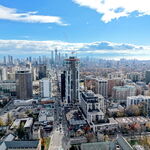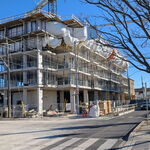[...]
The major rolling stock manufacturers sell DMUs with top speeds of 120-140 km/h, and EMUs with top speeds of 140-200 km/h; faster trains are generally more expensive, and with a few exceptions not of much use outside dedicated high-speed rail lines. The difference in acceleration performance is large: when the top speed is 100 km/h, an EMU such as the
FLIRT takes less than 30 seconds to accelerate from standstill to top speed, corresponding to an acceleration time penalty of about 14 seconds, whereas the
Stadler GTW DMU has a penalty of about 28 seconds (see data on PDF-p. 43); the GTW EMU version, a less powerful train than the FLIRT, loses 19 seconds. DMUs are also less comfortable than EMUs, because the diesel engines are right under passengers’ feet; longer-distance lines almost never use them, and instead use diesel locomotives, which accelerate even more slowly. Because of this large difference in acceleration performance, electrification delivers the greatest performance benefits on lines with closely-spaced stops and high traffic. These are usually commuter rail lines rather than intercity lines. For example [...discussion continues in detail...]





